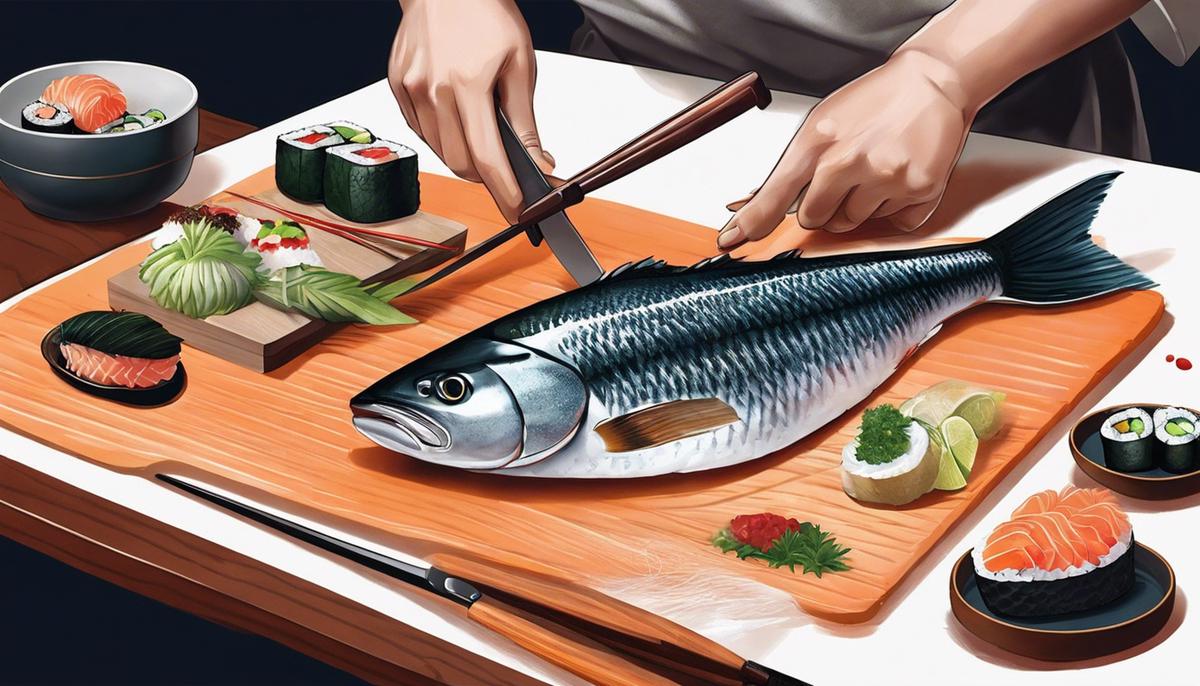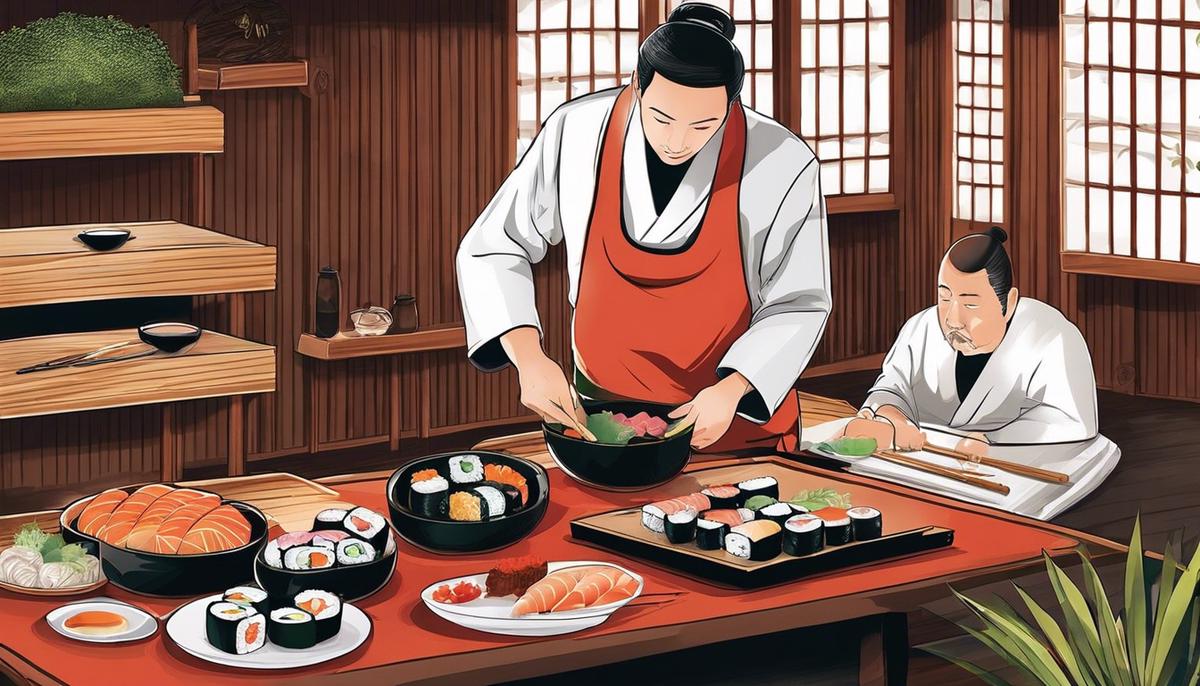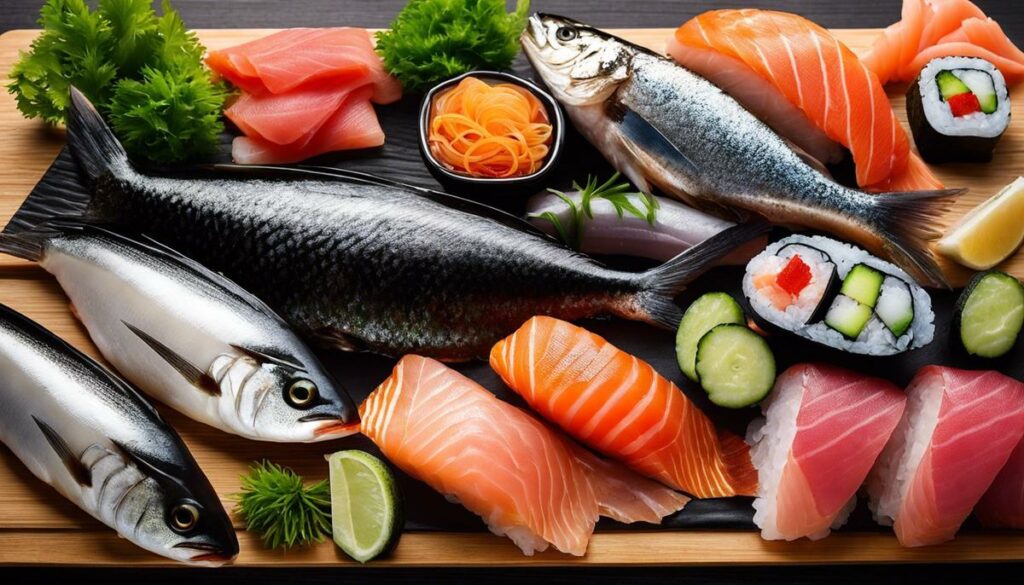The delicious aroma and unique texture of sushi can depend on both the quality of the fish used and the cutting technique of the sushi chef. It is an art form that is centuries old and requires a high appreciation for detail, presentation and, most importantly, taste. In this treatise, we will walk you through various aspects that should be taken into account when choosing the best fish for your sushi, starting with choosing the right type of fish and where to buy it, to the art of cutting fish.
Types of fish for sushi
Title: What types of fish make the best sushi? Make a difference!
Sushi, the world-famous Japanese treat, has established its permanent place in many of the finest dining rooms. Style, aesthetics and a carefully selected material play a decisive role in this. No compromises can be made when it comes to the quality of the fish, as harmony of taste is a top priority. For sushi enthusiasts who are looking for excellent homemade creations, it is essential to know the best types of fish for sushi.
Tuna is one of the indispensable classics in the sushi world. Its velvety texture and rich flavor make it the go-to choice for nigiri and maki sushi. Preferably, the varieties Bluefin or Yellowfin are available. Quality always comes at a price, but it’s definitely worth it.
Salmon is another popular choice. Its fatty and full-bodied meat is ideal for sashimi and sushi. Whether smoked or raw, salmon always offers a constant presence on the sushi plate due to its versatility.
Sea bass, which is currently becoming increasingly popular, is shaking up the sushi industry. With its white, firm flesh and mild flavor, it could become your new favorite.
The scallop, also known as the “Queen of the Sea”, provides an interesting change. Their tender flesh and smooth flavor are ideal for a silken tofu wrapping or tempura style in the sushi world.
Octopus, the phenomenon from the depths of the ocean, has also arrived on the sushi scene with its fibrous structure and strong flavor. However, careful preparation is essential to prevent it from becoming tough.
Not to be forgotten is the dentex, which is becoming increasingly popular among sushi lovers for its rosy-firm texture and sweet taste.
Finally, it is worth mentioning the eel, whose deep and rich flavor adds a special touch to the sushi plate. Both raw and smoked, it delights the palate.
Let’s remember that quality is the key to preparing sushi and it is of utmost importance to confirm the freshness and quality of the fish. Dare to experiment, experiment and discover your own favorites!

The Art of Fish Cutting
In the fascinating realm of Japanese gastronomy, the correct cutting of raw fish for sushi plays an essential role. Paying attention to a few details, cutting a fish becomes an art that convinces both in taste and presentation.
Use the right equipment. A sharp knife is not only about efficiency, but also about the beauty of the final presentation. Prefer a long, thin knife specifically designed for making sushi, known as a yanagiba. With precise, smooth movements, you cut the fish finely and evenly.
Cut mackerel-ace fish, such as swordfish, diagonally. In this way, the fish acquires an attractive structure and an expanded surface area, which enhances the amazing taste.
Try to sharpen your actions by constantly maintaining an angle of about 45 degrees when cutting the fish. This allows you to get nice thin and even slices.
Another essential aspect is the storage and handling of the fish itself. Freshness is crucial and affects not only the taste, but also the texture and appearance. Touch your fish with your hands as little as possible, instead use special hooks for moving.
For more sensitive fish, such as flounder, use the skin peeling method, where you gently peel off the skin of the fish with a special tool to preserve the texture and color. This requires precision and attention because the skin is extremely thin.
Keep aesthetics in mind. Try to maintain consistent lengths and shapes in your cuts. It’s equally important to know when less is more. A perfectly prepared sushi plate should be minimalist, clean, and aesthetically pleasing.
Cutting fish for sushi is a philosophy, a reflection of the meticulous precision and attention necessary for an excellent culinary presentation. This achieves the harmonious fusion of taste, texture and shape – the heart of any impressive sushi meal.

Hygiene rules when preparing sushi
Careful adherence to safety and hygiene rules when preparing sushi is invaluable. These regulations not only ensure food safety, but also help preserve the authentic taste and appearance of the sushi.
A central aspect of sushi hygiene practice is the proper handling and cleaning of the equipment. Disinfectants for hands and surfaces are essential. However, constant use can damage the delicate materials of sushi equipment and cutlery. Therefore, it is recommended to regularly clean equipment and replace it with new ones in order to preserve taste and aesthetics.
Hygiene rules also include the correct covering and storage of food. Raw sushi must be kept at the right temperature to avoid bacterial contamination. Likewise, the right procedures and techniques for handling cooked rice are crucial.
The cleanliness of the work area is also an essential point. Imagine a shiny bamboo rolling mat, polished wooden rice containers, and immaculate work surfaces lit only by radiant sushi rice – this is a sushi master’s dream.
Compliance with hygiene rules also means not allowing cross-contamination between different types of raw fish and cooked rice. Each fish has its own taste and smell, and mixing these flavors can detract from the overall profile.
Our last, but certainly not least important point is gloves. The hands are the sushi master’s main tool. They must always be clean and free of cuts or wounds to avoid contamination. Some sushi masters prefer to wear gloves during certain tasks such as forming sushi rolls and nigiri.
In conclusion, good hygiene practices are the key to safe, tasty, and visually appealing sushi. It emphasizes the authenticity and fine craftsmanship of sushi preparation, increasing customer safety and confidence. After all, food is not only a question of taste, but also of trust.

Presentation and presentation of the sushi
Considering these specific crafts in the preparation of sushi, we now turn our focus to other aspects of a sublime sushi experience: the dignified presentation and the powerfully bold selection of relevant decorations.
First of all, let’s admit that a well-groomed sushi experience goes far beyond the mere enjoyment of immaculately sliced fish. It is an overall presentation that speaks the culinary dialogue, a melody that sings each plate in a rhythm, allowing the aesthetic arrangement of sushi to blossom intuitively. For example, how we position the sushi rolls on the plate, the order in which the different sushi are delivered, and what dips or side dishes are presented, all of this contributes to the overall impression that the sushi experience creates.
An essential detail that is far too often overlooked is the choice of tableware and decorations. A high-quality, stylishly chosen sushi set can increase the visual enjoyment many times over. Such a set could consist of a high-gloss black serving platter, asymmetrically shaped soy sauce bowls, and exquisite chopsticks to make the presentation complete.
The presentation of sushi should also take into account visual contrast. The colors of the different pieces of sushi, together with the rich greens of the wasabi paste and the delicate pink red of pickled ginger, create a vibrant and visually seductive palette.
It’s also essential to incorporate authentic Japanese elements into the presentation to make the experience truly memorable, with filigree origami creations, elegant fans, or even a touch of emblematic sakura flowers.
Perfection in sushi presentation is best achieved through practice. Working through, trying things out, rediscovering – these are the central components that lead to mastery. Just as every shade of color in a watercolor painting makes a difference, every detail in the presentation of a sushi dish can unfold its full beauty.
The presentation of sushi is ultimately an art form that is cultivated through mindfulness, creativity, and passion. A stylish and appealing presentation of sushi reflects both the respect for the raw ingredients and the underlying art and craft. This is a tribute to the timeless tradition of sushi and the meaningful ritual behind it.
This is the only way to turn every single bite into an incomparable symphony of tastes.

Choosing the right fish for sushi is not a task to be taken lightly. In addition to the quality and freshness of the fish, proper cutting technique and a certain level of hygiene also play an essential role in the production of sushi. It’s an experience that appeals to all the senses – the aroma, the texture, the look, and even the arrangement on the plate. With this knowledge and a passion for the art of sushi, you can ensure that every piece of sushi you prepare is nothing short of perfect.


